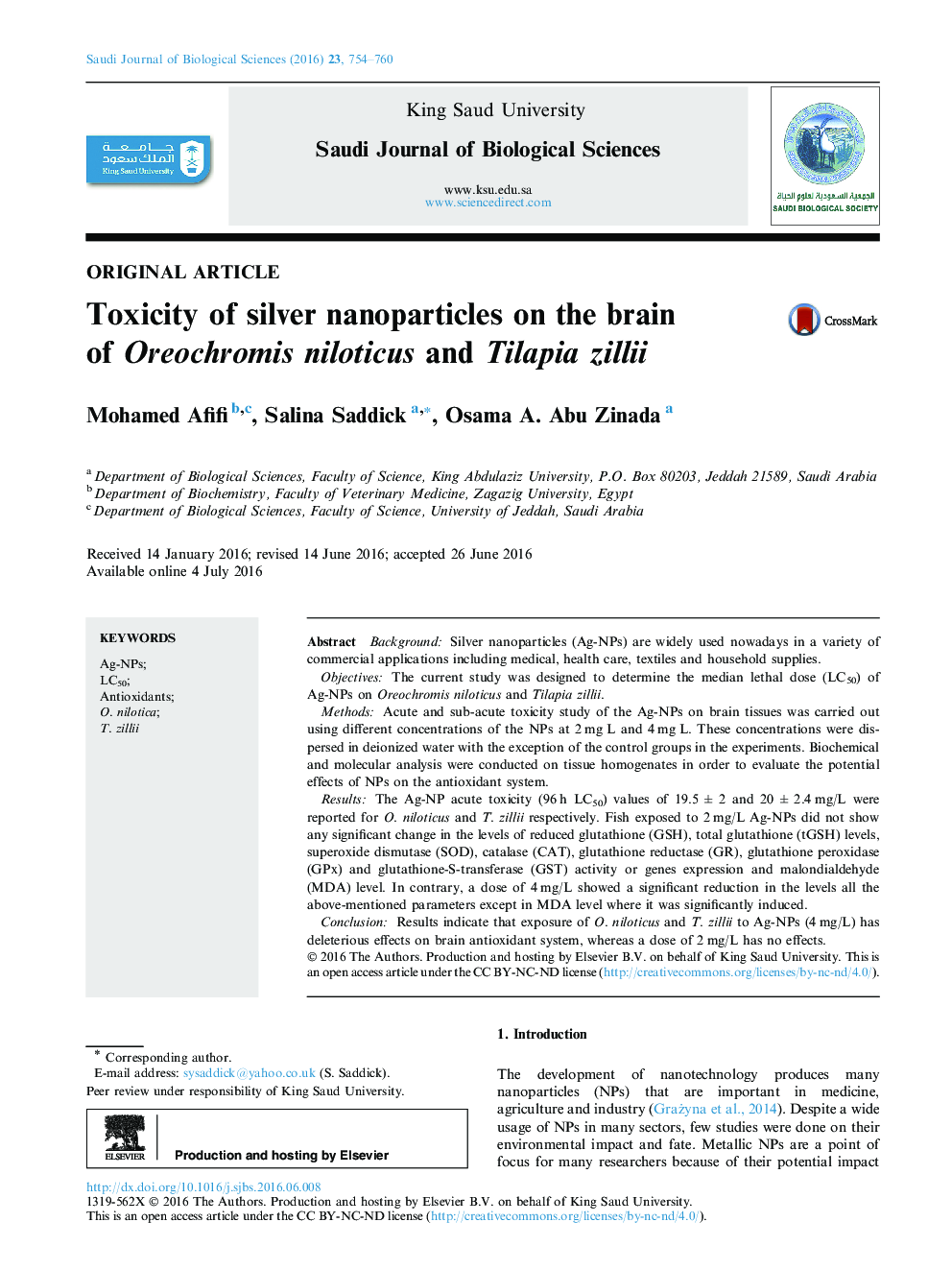| Article ID | Journal | Published Year | Pages | File Type |
|---|---|---|---|---|
| 5745453 | Saudi Journal of Biological Sciences | 2016 | 7 Pages |
BackgroundSilver nanoparticles (Ag-NPs) are widely used nowadays in a variety of commercial applications including medical, health care, textiles and household supplies.ObjectivesThe current study was designed to determine the median lethal dose (LC50) of Ag-NPs on Oreochromis niloticus and Tilapia zillii.MethodsAcute and sub-acute toxicity study of the Ag-NPs on brain tissues was carried out using different concentrations of the NPs at 2 mg L and 4 mg L. These concentrations were dispersed in deionized water with the exception of the control groups in the experiments. Biochemical and molecular analysis were conducted on tissue homogenates in order to evaluate the potential effects of NPs on the antioxidant system.ResultsThe Ag-NP acute toxicity (96 h LC50) values of 19.5 ± 2 and 20 ± 2.4 mg/L were reported for O. niloticus and T. zillii respectively. Fish exposed to 2 mg/L Ag-NPs did not show any significant change in the levels of reduced glutathione (GSH), total glutathione (tGSH) levels, superoxide dismutase (SOD), catalase (CAT), glutathione reductase (GR), glutathione peroxidase (GPx) and glutathione-S-transferase (GST) activity or genes expression and malondialdehyde (MDA) level. In contrary, a dose of 4 mg/L showed a significant reduction in the levels all the above-mentioned parameters except in MDA level where it was significantly induced.ConclusionResults indicate that exposure of O. niloticus and T. zillii to Ag-NPs (4 mg/L) has deleterious effects on brain antioxidant system, whereas a dose of 2 mg/L has no effects.
